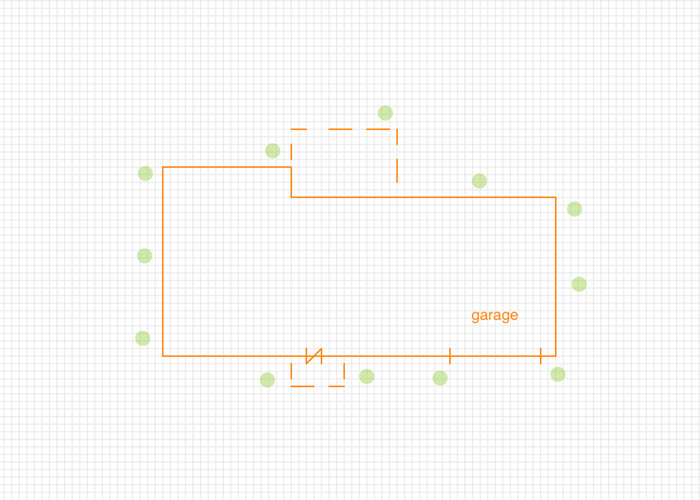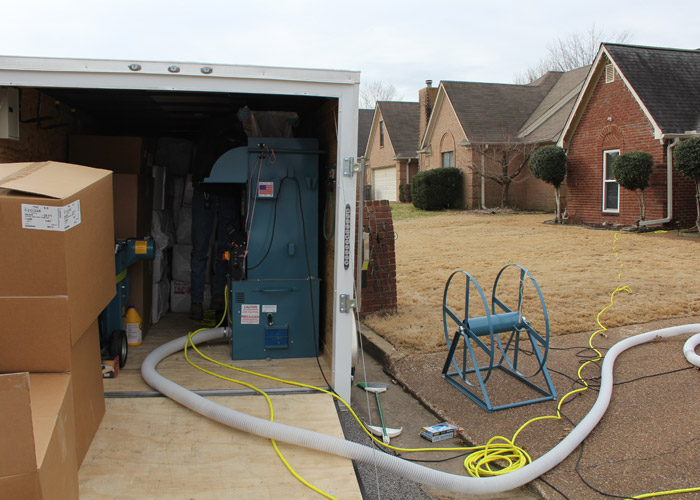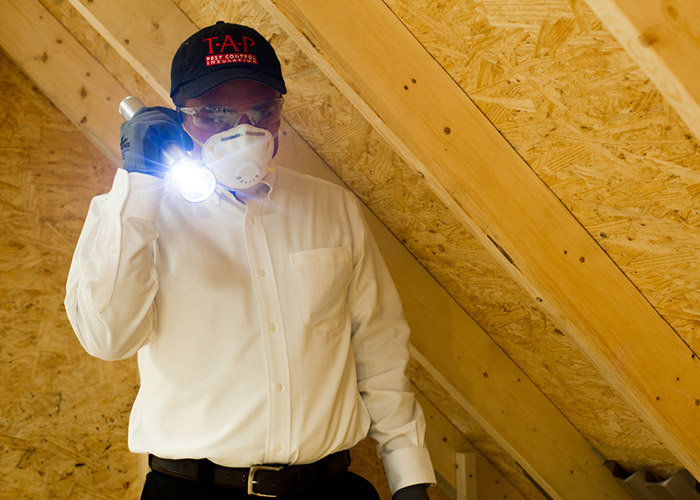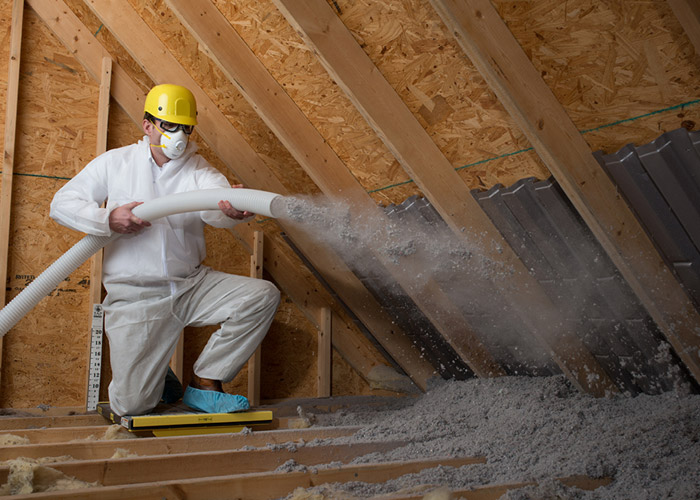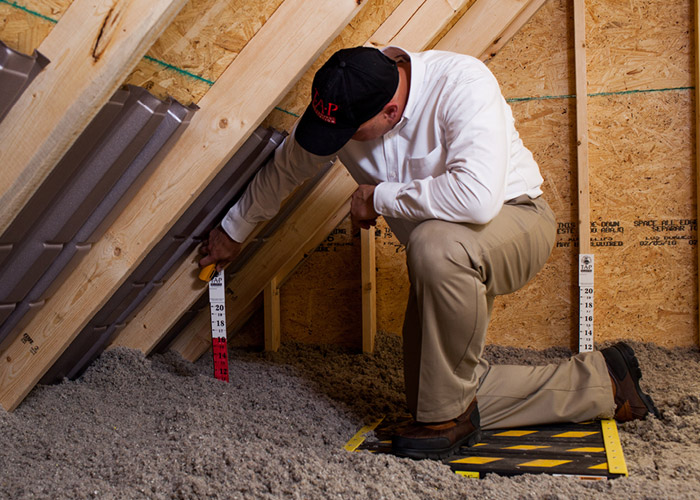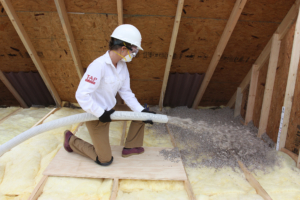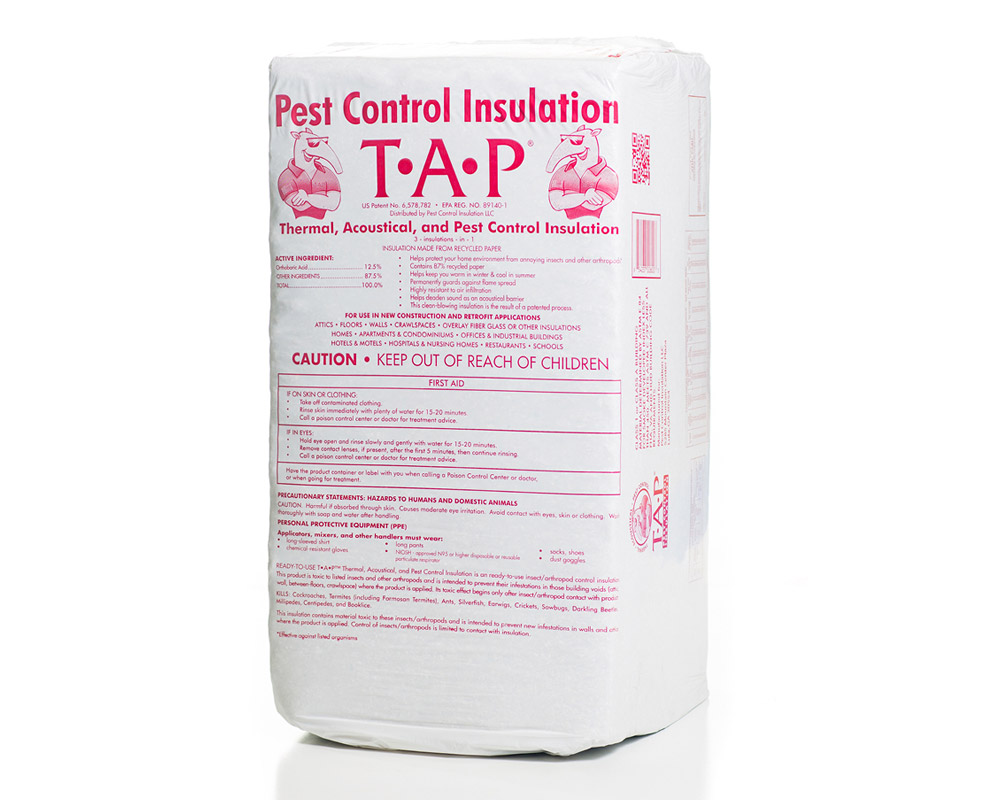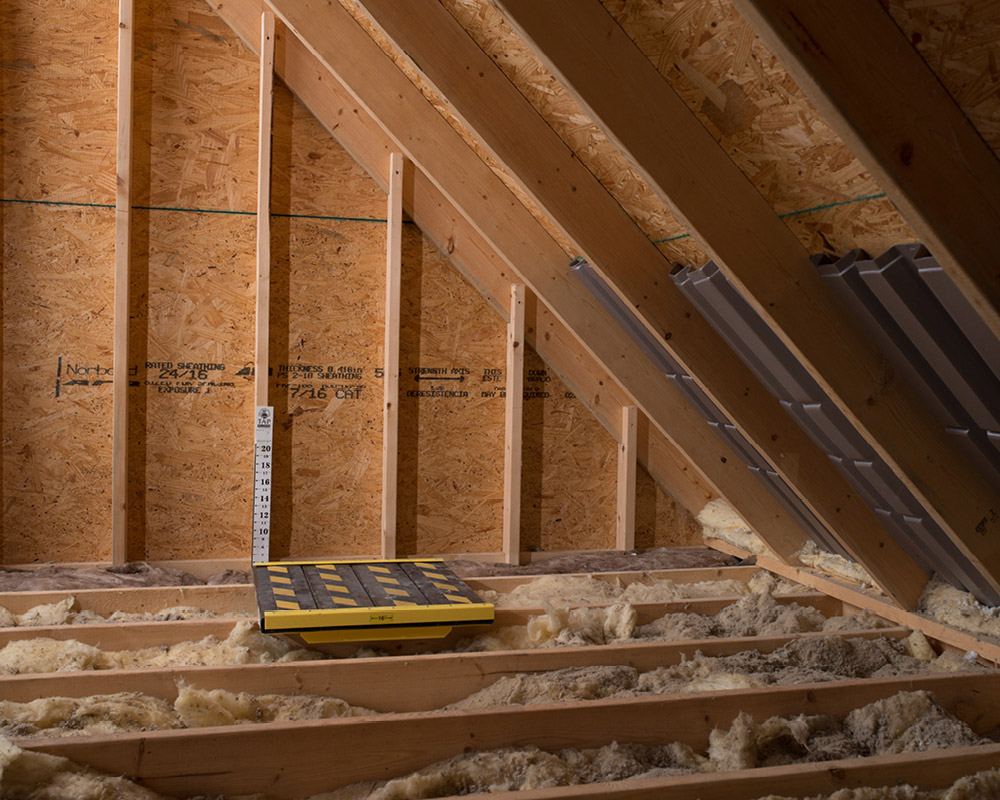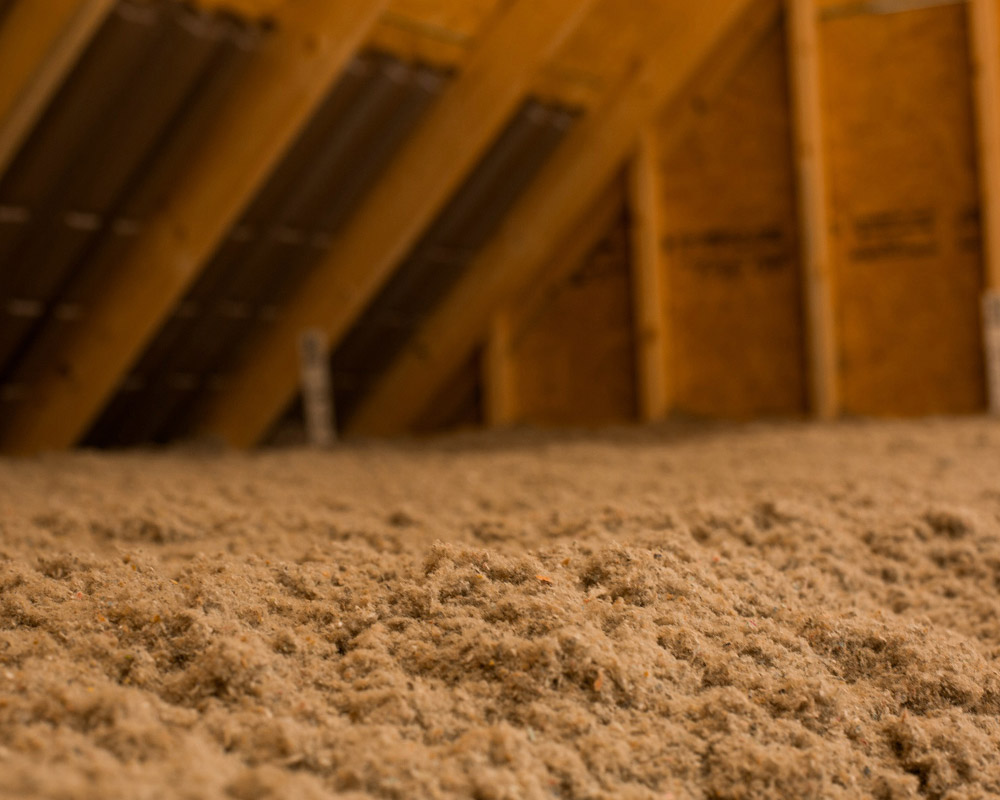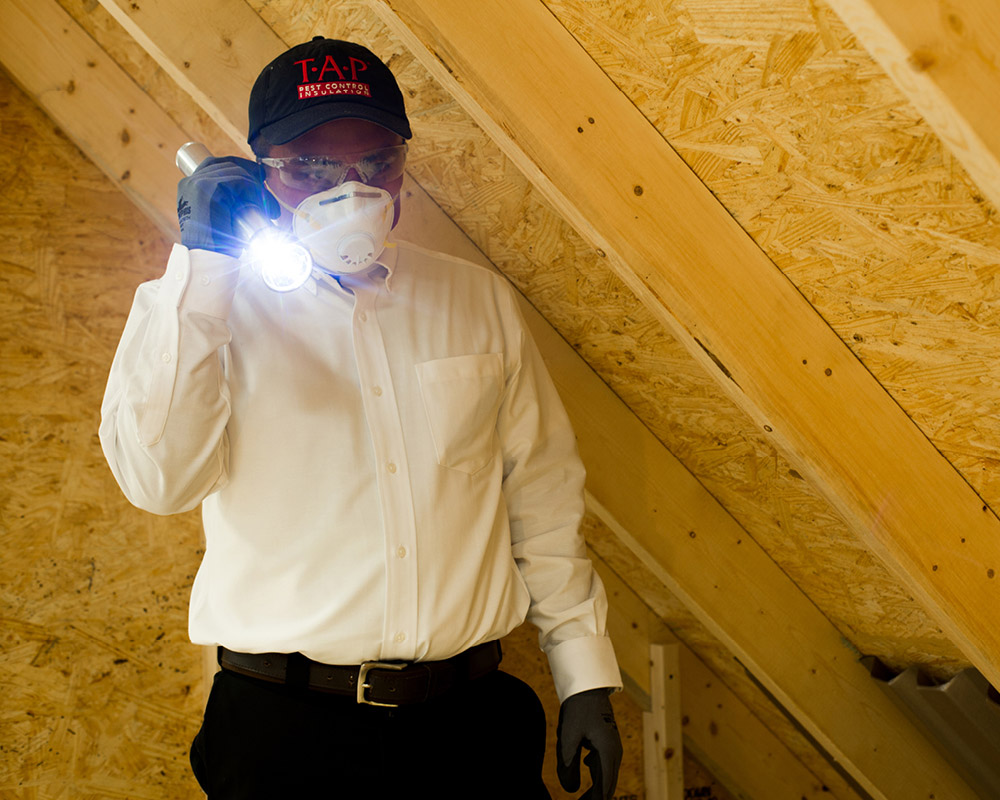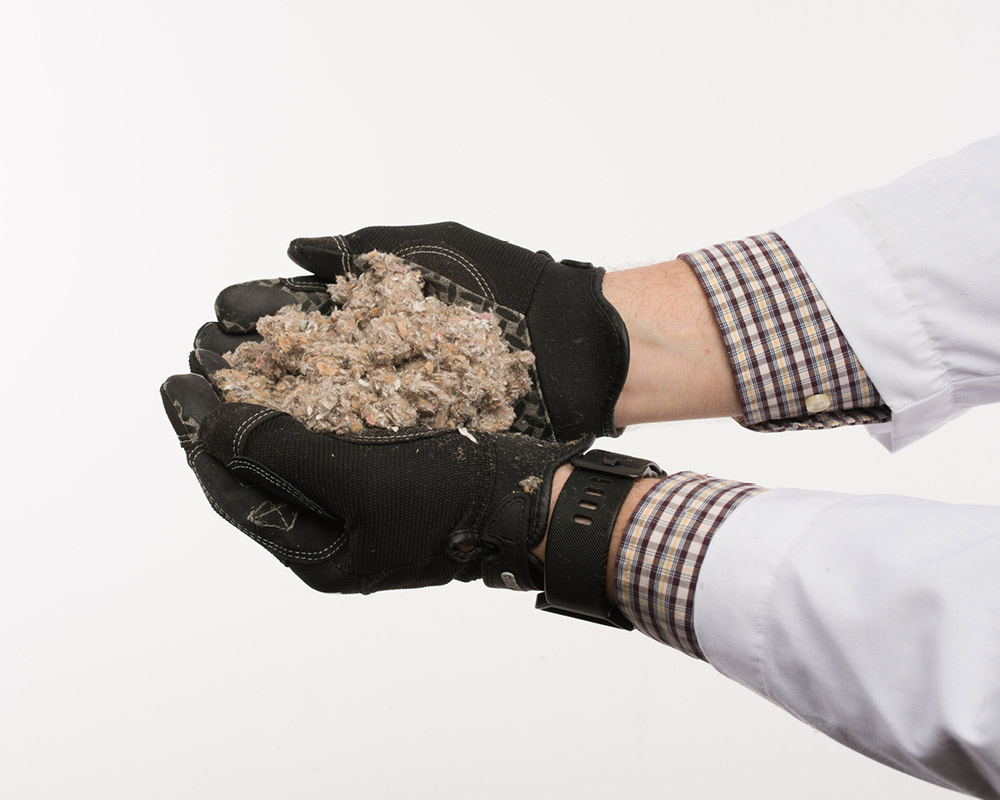Attic Insulation & Restoration
TAP ATTIC INSULATION
Thermal
Acoustical
Pest Control
These three primary benefits of TAP Pest Control Insulation help deliver comfort, protect your family’s health, and save money.
As an EPA-registered pesticide, TAP Pest Control Insulation, first and foremost, controls common pests that invade the home through the attic such as Ants, Bat bugs, Booklice, Boxelder Bugs, Centipedes, Cockroaches, crickets, Darkling Beetles, Dermestids, Earwigs, Firebrats, Kudzu Bugs, Lady Beetles, Millipedes, Pillbugs, Silverfish, Slugs, Snails, Sowbugs, Stink bugs, and Termites (including Formosan Termites).
As a cellulose insulation, TAP Pest Control Insulation is produced by grinding-up old newspapers into small enough pieces where the paper fibers begin connecting to create small air pockets within the insulation. These small air pockets and the unique characteristics of the cellulose paper fibers are the key to the superior performance of TAP Pest Control Insulation.
Both qualities help achieve a comfort level unsurpassed by other insulation products on the market.
Attic Capping with T•A•P® Pest Control Insulation
Step 1: The Attic Inspection & Professional Graph
Step 2: The Set-Up
Step 3: Protection & Preparation
Step 4: Installation
Step 5: Quality Control
Attic Insulation Removal and Replacement: T•A•P® into the Growing Trend
Raccoons, Roof Rats, Squirrels and Opossums in your Attic insulation can be easily damaged in a number of ways resulting in a reduction of the overall thermal and acoustical benefits of the insulation or even create hazardous health concerns within your home. The relative warmth of an attic in the winter, as compared to the outside, can be an attractive place for small animals and insects to hide leaving behind feces and other materials and creating a health hazard in the home. Additionally, the soft and fluffy fiberglass insulation in the attic can be blown around by air entering through the soffits which can reduce the overall performance and benefit of the insulation.
The insulation in your attic should be inspected on a regular basis by a professional who can identify problems and offer energy smart and health-conscience pest management solutions.
Here are a few examples of problems that can occur with attic insulation over time and simple reasons for removal:
According to the Center for Disease Control (CDC), humans can become infected with diseases from rodents when they are exposed to fresh urine, droppings, saliva, or nesting materials.
When the droppings are moved around, spores can become airborne and enter the human body through inhalation, eyes, and ears. Airflow could also potentially create this same effect.
- Disturbed or damaged insulation costs homeowners money in energy bills and invites moisture damage.
- Uneven insulation and leaky duct work make your HVAC system work harder and robs homeowners of comfort and money.
- Animal presence in the attic means urine and feces and even animal carcasses giving off odors. Homeowners may be living with a litter box right above their heads!
- The animals and their residue attract insects, mold, bacteria and other microorganisms which feed and breed on organic wastes.
- According to the USDA, since free-roaming wildlife does not receive veterinary care, all species can carry diseases and parasites.
- The USDA cites fleas, ticks, lice, and mites as contributing to tuberculosis, histoplasmosis, and encephalitis. Children and pets are particularly at risk.
This is why TAP Pest Control Insulation is the wise choice for your home and protection of your family.

